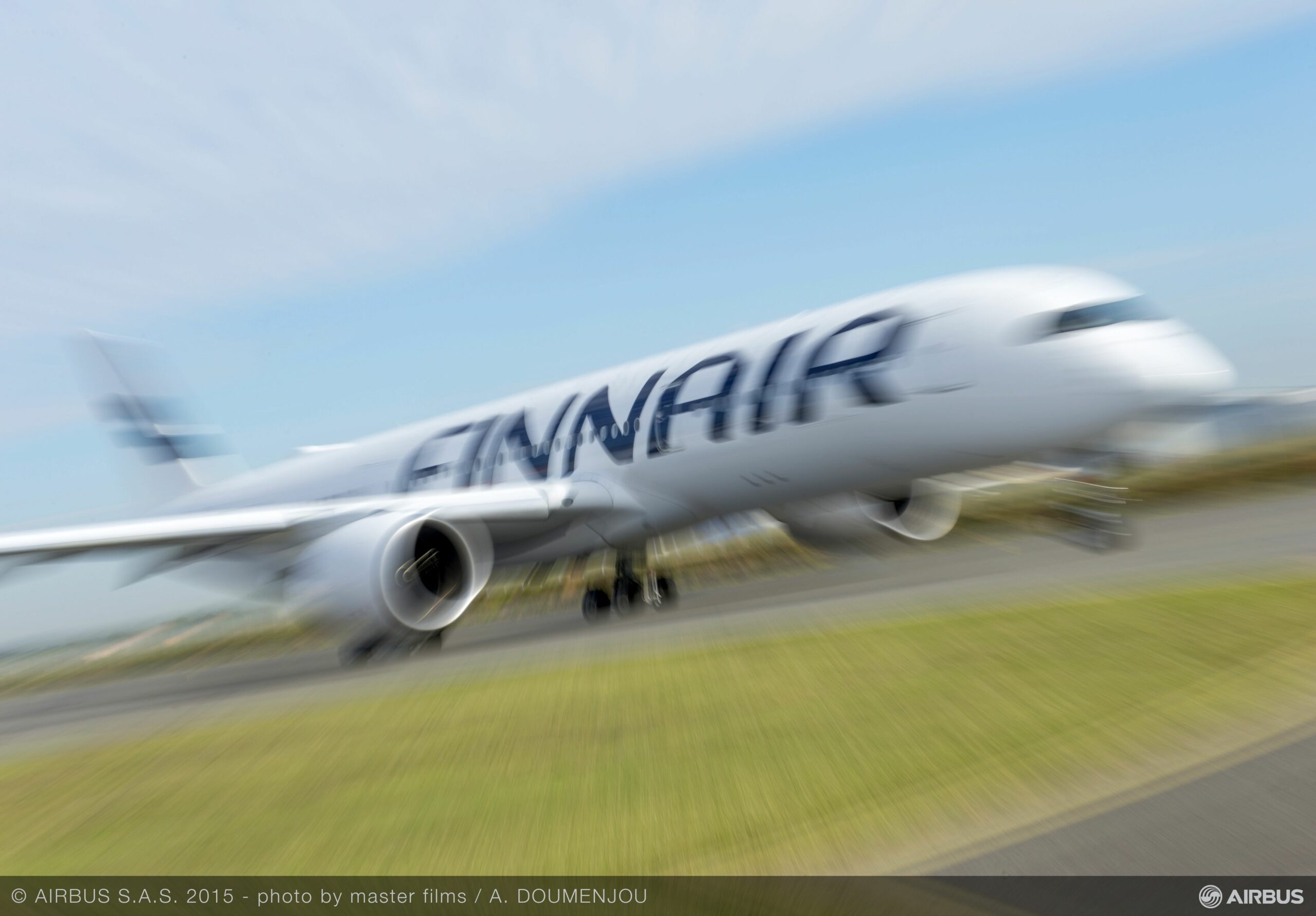
A350 XWB Finnair details 6 scaled
Finnair produced its first operating profit since Q3 2019, but the net result is still negative. The €35 million EBIT is also leaning heavily on seasonal effects, with the summer traditionally being the strongest period. Increasing costs confirm the need for Finnair’s recently announced revised strategy. Finnair’s Q3 result confirms need for new strategy.
In the summer quarter, Finnair carried 2.8 million passengers and enjoyed the effects of pent-up demand. Demand for city trips, package holidays to Greece, and its North American destinations proved particularly popular despite price increases. The airline has seen no effect from the war in Ukraine and tensions with its direct neighbor Russia on bookings. In fact, bookings remain strong for the coming winter. Capacity was 66 percent of Q3 2019 levels, the load factor was 80.1 percent.
Passenger revenues increased to €553.9 million from €113.9 million in Q3 2021. Ancillary revenues were up to €36.3 million from €10.5 million. A welcome contribution to revenues came from cargo, at €73.4 million versus €65.4 million. Although cargo demand has softened quarter-on-quarter, Finnair benefitted from increased capacity and higher prices that pushed revenues up. Total revenues were €719.2 million versus €199.4 million.
Strong demand for cargo to Asia was the key reason that Finnair was able to maintain most of its Asian network, but these operations were challenging. With continued lockdowns and travel restrictions, flights were often canceled. And the closure of Russian airspace to European airlines following the EU sanctions on Russia extended routes out of Helsinki by up to forty percent. Capacity to Asia was just 35 percent of 2019, but the longer routes pushed heavy on costs, especially after jet fuel prices soared. At €138 million, passenger revenues to Asia were higher than those to North America (€94.3 million).
The higher total revenues were offset by significantly higher expenses of €739.8 million compared to €318.1 million in 2021. Fuel costs increased to €242.1 million from €47.9 million and the effect was extended by the higher US dollar, which is the most significant currency for Finnair after the euro. This made jet fuel 77.9 percent more expensive year on year.
The effect is a comparable operating result/EBIT of €35.2 million, a significant improvement over €-109.1 million in Q3 2021. But after taxes and (higher) financial expenses, the net result is €-37.2 million versus €-115.1 million. So even in its strongest quarter of the year, Finnair still produced a net loss. For January-September, revenues were €1.669 billion (2021: €424.9 billion), expenses €1.961 billion (€854.7 million), EBIT €-181.8 million (€-403.6 million), and a net loss of €-529.5 million (€-380.7 million). Net cash flow was €229.1 million. Liquidity stands at €1.6 billion and net debt €1.1 billion. Finnair drew down €110 million of a €400 million state loan.
Discussions with unions continue
As CEO Topi Manner explained, the results confirm the need for Finnair to implement the new strategy, which was announced in early September. This should bring the airline back to profitability in 2024 through a more balanced network and fleet and cost reductions, which will help improve unit revenues, repair the balance sheet and get to EBIT levels of five percent. In late September, Manner confirmed that the plan includes the reduction of 200 managerial roles.
“As a part of our efforts to lower unit costs, negotiations with the personnel about changes to employment terms are progressing and we have reached conditional negotiation results with two of our unions. We are also seeking savings from other cost items,” Manner says in the Q3 report. “Further, we started discussions with our personnel after the period to streamline the company’s structures globally. Strategy implementation will proceed at pace in every area and needs contribution from all stakeholders.”
The fleet plan still includes the delivery of two A350-900s in Q4 2024 and Q1 2025, which would bring the number of A350s to nineteen. Finnair has no other aircraft on order and has 56 aircraft, of which 25 widebodies and 31 narrowbodies, plus 24 that are operated by Nordic Regional Airlines.
Finnair plans to operate at seventy percent capacity in Q4. If wet leases of aircraft to International Airlines Group (IAG) and Eurowings are included, capacity will be eighty percent. It will launch weekly services from Helsinki to Doha (Qatar) from October 31 instead of three weekly flights. Before the end of the year, services from Copenhagen and Stockholm to Doha will be launched as part of the agreement with Qatar Airways that was announced in August.
On the financials, the carrier says: “The company reiterates its guidance according to which the 2022 comparable operating result will be significantly negative for a third consecutive year.”
Views: 1




